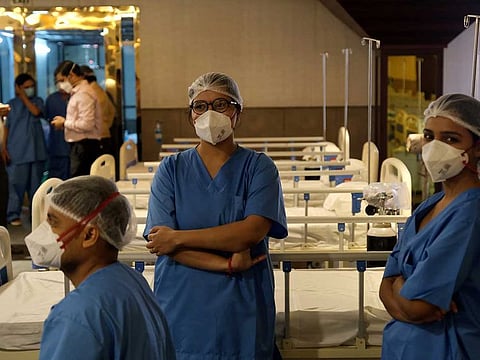COVID-19: India faces a tough challenge
7 million and counting, coronavirus cases may continue to surge in the country

India’s Ministry of Health announced the country has crossed 7 million cases on Sunday, becoming only the second nation in the world to touch this notorious milestone after the United States. This number is not unexpected as the country has been continuously reporting highest daily increase for several weeks. Also, given the population density and socioeconomic challenges, the surge in India follows a pattern predicted by international health experts.
What is, however, baffling to epidemiologists is the low mortality rate in comparison to the West where the pandemic has killed more. India’s death tally is in line other South Asian and Southeast Asian nations where fewer people died due to the virus.
The government is unlikely to reimpose lockdowns or movement restrictions and people appear reluctant to follow safety measures. At this juncture, therefore, the disease unlikely to slow down and the number of cases may surpass United States by next monthGulf News
Still, some experts have pointed out inadequacies in death reporting mechanism in India where anecdotal evidence suggests many fatalities take place at home or on way to hospitals. Therefore, the real death rate may not be available till experts start comparing registered deaths of this year and the last. Also, experts attribute low mortality rates to lack of adequate testing, many deaths are blamed on co-morbidities in the absence of a positive certificate.
As the country heads into festive season later this month, the cases are expected to spike. Already, there are visible signs of fatigue setting in for social distancing and masks, the two basic precautionary measures never properly complied with since the beginning of the pandemic. During festivals, markets are crowded, public transport systems run at full capacity and caution is thrown out of the window. The health authorities, therefore, will face challenges in containing new cases which have slowed down to around 70,000 from the peak of almost 100,000 daily.
Academic calendar
Another big challenge India faces is the school and university academic calendar. Schools and universities remain closed and classes continue to be conducted online. By November every year, school syllabus for senior classes nears completion and students appear for pre-board tests ahead of final exams in March. On-site learning for senior grades is expected to resume from October 19 under strict conditions, including a negative certificate for all students and staff. The resumption of the classes will coincide with the festive season that will continue till November 14.
These challenges will hamper India’s ability to check the pandemic and infection rate may register a surge ahead of winter. The government is unlikely to reimpose lockdowns or movement restrictions and people appear reluctant to follow safety measures. At this juncture, therefore, the disease unlikely to slow down and the number of cases may surpass United States by next month.
Sign up for the Daily Briefing
Get the latest news and updates straight to your inbox



